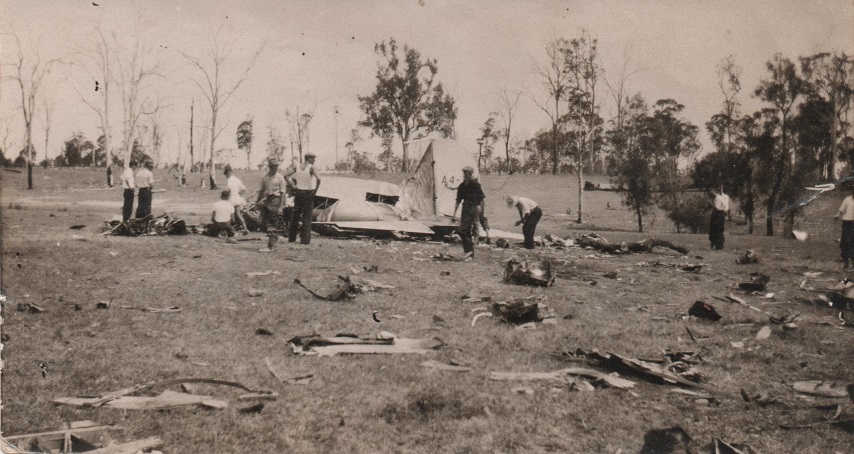
In 1940 what should have been a routine World War II air flight instead ended up as a dramatic crash near Loxford. The evening of 10 January had begun routinely enough, when a RAAF Avro Anson bomber left Canberra to fly to Richmond RAAF base. On board were three servicemen: 21 y.o. Leading Aircraftman Walter Feekings, 25 y.o. Pilot Officer Frederick Robilliard and a more experienced pilot, 34 y.o. Flight Lieutenant Sturt de Burg Griffith.
As the flight continued conditions deteriorate. A thick fog rolled in and visibility rapidly declined, so much so that the plane lost its bearings around Sydney and kept heading north. The crew became confused and could not ascertain their location.
Circling for hours, the pilot attempted in vain to find a navigation point, keeping in contact with the Richmond base. At 11.00pm contact was lost, they were on their own with fuel supplies running dangerously low. The situation was perilous; a crash inevitable.
To ensure the safety of his crew Griffith ordered them to bail out and after they had parachuted he continued to search for somewhere to land. But zero visibility was against him, so his strategy became to deliberately stall the plane, allowing it to glide for a while, giving him time to jump out safely.
Despite his flying experience Griffith had never done a parachute jump of any kind before and his first one was to be into black darkness, not knowing where he was going to land. Despite this he was cool and philosophical, later saying “I knew I had to go and that was all there was to it”.
A few minutes later, at 11.50pm, the plane smashed into the ground landing in Mr. J. Nicholls’ paddock at Deep Creek, near the Soldiers Settlement at Kurri Kurri (now Loxford). It split into pieces, the engines torn from the machine, the wings smashed and debris was scattered over a large area.
In Kurri Kurri residents had reported to the police the sound of a plane engine cutting out, a flash of light “like a shooting star” and then a terrific crash. Quickly a search party set off and following the pungent smell of fuel they located the plane about 1.00am. But where were the crew? They were all alive, but in the course of their jump they had landed kilometres from each other.
Walter Feekings had landed in a tree at Buchanan and was able to climb down. He headed to nearby houses, knocking on doors and asking for help. It was nearly 2.00am and his incredible tale was met by disbelief with locals closing their doors in his face. He said later “they thought I was a practical joker”.
Feekings could see the lights of an unknown township – it was Kurri Kurri – in the distance and he kept walking toward it. On the way he met a late night farmer on a horse who gave him a ride into town where he alerted authorities.
Frederick Robilliard landed safely on the ground near Rutherford Army Camp and was able to walk into the camp uninjured. When Sturt Griffith came down later he struck a tree and became entangled by his parachute, suffering a black eye and a scratched face. He was able to disentangle himself and also headed to Rutherford Camp.
Remnants of the plane quickly became sought after local souvenirs despite the military guard which was quickly put around it. All three crew men went on to have successful flying careers, surviving WWII and living long civilian lives.